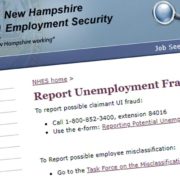Identifying Financial Risks And Implementing Controls – Protect Your Nonprofit
Every nonprofit organization faces various financial risks and vulnerabilities, making it essential to implement a comprehensive range of controls. Just because an organization is a nonprofit does not make it immune to fraud, waste, or abuse. Without designated financial controls, restrictions, and oversights, an organization can quickly find itself the victim of cash flow shortages, employee fraud, and even unable to meet the organization’s mission. Understanding some essential financial controls can help you best protect the organization and its mission, board members, assets, and interests.
The IRS looks at several key governance areas as they have determined that compliance in these areas often indicated good practices in other areas. To best mitigate risk, a nonprofit organization should have detailed processes, policies, and procedures that demonstrate:
- Appropriate compensation for executives and board members
- Resolving potential conflicts of interests
- Detailed record retention policy
- Whistleblower policy
- Timely filing of all required payroll and informational returns
Finally, a well run nonprofit will have a model board that’s active and engaged, of an appropriate size, and comprised of independent members. If you don’t currently have these components in place, your organization may be more vulnerable to fraud, waste, and abuse.
Implementing Control To Protect Nonprofit Interests
Many nonprofit organizations find that they face more financial risk than other organizations due to their smaller staff, lower pay, and fewer resources, making cohesive fiscal controls a must. It’s important for stakeholders to continuously ask, “what could go wrong?” and “how can we prevent or catch a problem before the transaction is complete?” Some effective, simple controls that small organizations can implement may include:
- Consistent, timely, accurate financial reporting
- Two check signers on all or checks over a certain amount
- Duplicate bank statements received and reviewed by a board member with no check signing authority
- Monthly reconciled and reviewed bank accounts
- Regular and timely budget to actual comparisons with verifiable explanations for variances
- Segregation of duties to the extent possible
- Board-reviewed financial statements
- Written (and followed) accounting policies and procedures
- Prompt deposits
- Limited access to cash and other assets
Most importantly, nonprofit organizations need to set a strong tone regarding financial responsibility at the top of the organization. The board should have a firmly established policy for financial management as well as consequences for any deviation from approved policies. The organization’s internal controls should also include consistent training that covers the importance of upholding every control to ensure employees can’t inadvertently violate the organization policies and put the organization at risk due to a lack of understanding.
Have questions about protecting your nonprofit organization from financial risk? We can help. Contact LMRPA today to consult with an experienced financial advisor regarding your organization’s needs.










